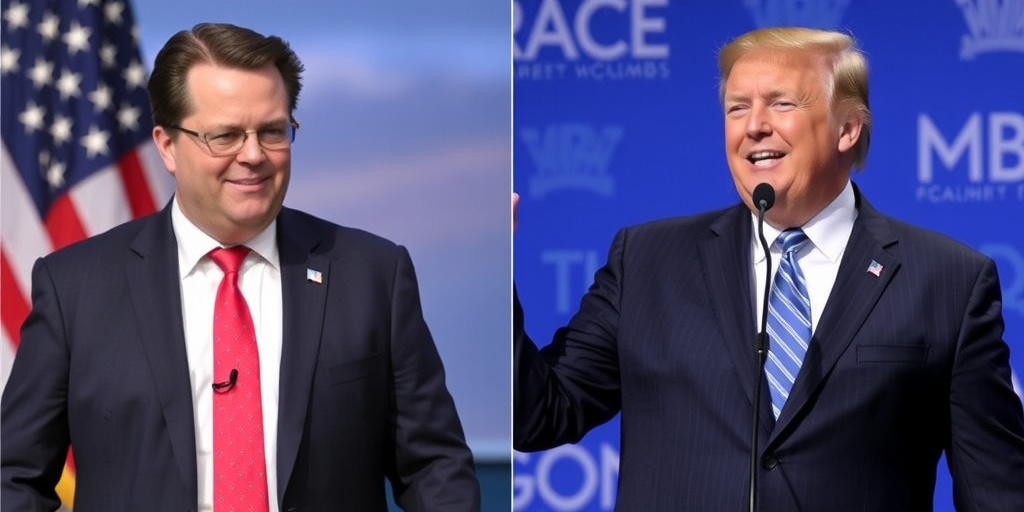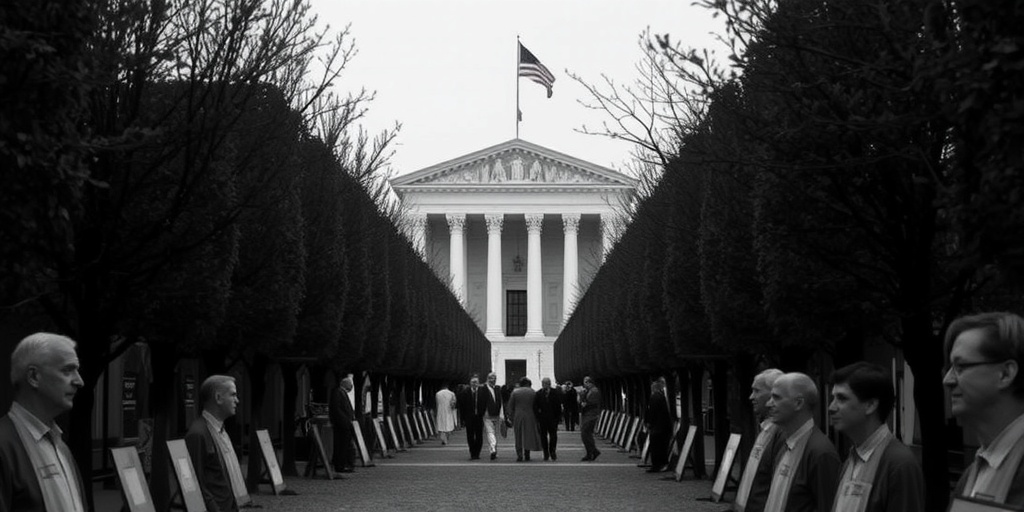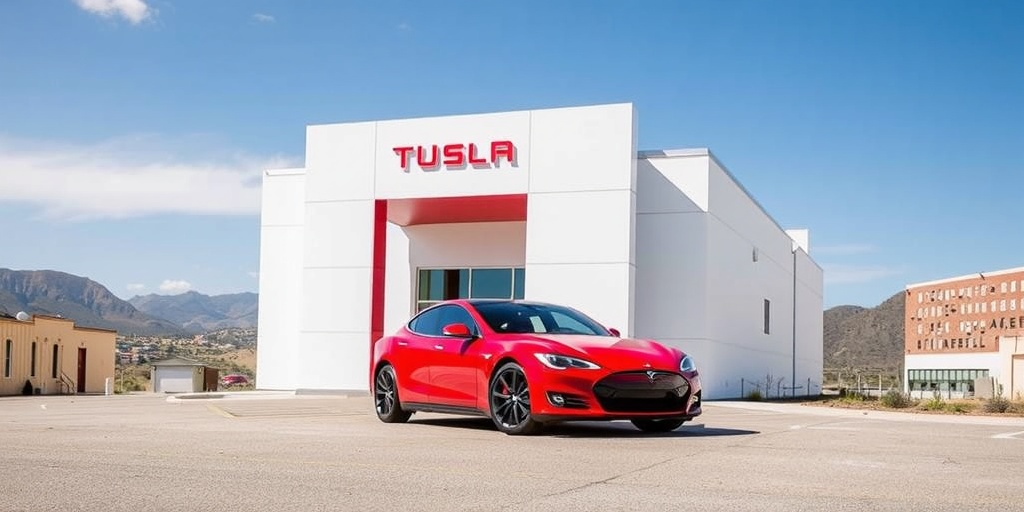Now Reading: JD Vance Gains Right-Wing Support as Potential Trump Successor
-
01
JD Vance Gains Right-Wing Support as Potential Trump Successor
JD Vance Gains Right-Wing Support as Potential Trump Successor

JD Vance Positioned as Potential Successor to Trump Amid Early 2028 Speculation
In the wake of the new administration, discussions surrounding the political landscape of the Republican Party have intensified, particularly regarding Vice President JD Vance and his potential as a successor to former President Donald Trump. As attention turns towards 2028, Vance is emerging as a key figure, leading legislative initiatives associated with Trump’s agenda and shaping the future direction of the MAGA movement.
Vance’s influence within the administration is palpable; he is perceived as Trump’s primary lobbyist in the Senate. His responsibilities have expanded to include overseeing the prospective sale of TikTok, a task granted to him as recognition for his efforts in delaying a ban on the app that was set to be implemented shortly before the inauguration. This involvement signifies Vance’s growing role within the inner circle of Trump’s administration and highlights the strategic maneuvers being made as the political landscape evolves.
As Vance and his aides proactively position themselves for a potential presidential run, it became evident during discussions about ambitious plans within the administration. At one point, when Trump considered appointing Florida Governor Ron DeSantis to a cabinet position, Vance’s advisers urged him to oppose the move to mitigate competition for the upcoming Republican nomination. Surprisingly, Vance took a different stance, believing that bringing DeSantis into the administration may present a strategic advantage, making any future criticisms from the Governor less impactful.
The prevailing sentiment at gatherings of right-wing activists, such as the recent Conservative Political Action Conference (CPAC), underscored Vance’s rising profile as a prospective leader within the party. The anticipation surrounding Trump’s presidency has shifted towards discussions of retaining power for consecutive terms, with many activists expressing enthusiasm over Vance’s potential candidacy. Jack Posobiec, a pro-Trump figure, stirred excitement among attendees when he touted Vance as “the 48th president of the United States,” underscoring his perceived capability to carry forward Trump’s vision.
This year’s CPAC marked a notable shift, with the annual straw poll of prospective Republican candidates absent of Trump’s name, a decision that reflects the evolving dynamics of the party. Candidates competing for the spotlight included JD Vance, Ron DeSantis, and Donald Trump Jr., among others. Although Vance commanded attention, there were mixed feelings regarding his status as a frontrunner for the 2028 election.
During a highlight session, Vance engaged with the audience, reinforcing his alignment with Trump’s vision. Conference participants, like Suzanne Rocci, expressed optimism about Vance’s trajectory, suggesting that his continued partnership with Trump would prepare him for a future bid for the presidency. Rocci stated, "He’ll learn from Trump for four years, and then we’ll have him for the next eight," signifying a robust endorsement of Vance’s potential role in continuing the MAGA agenda.
Vance’s growing reputation was further solidified through his recent speech at the Munich Security Conference, in which he critiqued European allies for their perceived failures in upholding free speech principles. The media buzz around Vance’s remarks has contributed to his visibility and credibility on the international stage, reinforcing his status as a rising star within the party.
Despite this visibility, Trump’s recent comments on Fox News, where he refrained from endorsing Vance as his potential successor, introduced uncertainty into Vance’s aspirations. Trump acknowledged Vance’s contributions as vice president but emphasized the existence of “a lot of very capable people” within the Republican ranks. This comment prompted Vance to seek clarification on his standing within the administration, resulting in a private conversation aimed at assuring him that his position remains secure.
At CPAC, not all attendees displayed the same level of enthusiasm for Vance. Some, like Couy Griffin—a former county commissioner with ties to the January 6 Capitol events—imparted a more critical view of the current political climate, voicing concerns that tangible changes were needed before long-term loyalty to any political figure could be warranted. Griffin noted a disconnect between Trump’s lofty proclamations and the realities faced by everyday citizens, emphasizing the importance of effective governance over symbolic leadership.
Adding to the discourse, Stephen K. Bannon, Trump’s former chief strategist, urged the administration to prioritize substantial benefits for working-class Americans. Bannon suggested that Trump should forgo tax cuts for the wealthy, pressing instead for significant budget reductions and fiscal responsibility. His comments highlight a broader trend among certain factions of the Republican Party advocating for concrete actions over political theater.
As discussions about the future of the GOP intensify, it is clear that JD Vance is positioning himself at the forefront of this evolving narrative. Speculation regarding his potential as Trump’s successor is indicative of a shift toward a new generation of leadership seeking to carry forward Trump’s legacy while addressing the pressing issues facing the American electorate. Whether Vance will ultimately rise to this challenge remains to be seen, but his current trajectory suggests he is a key player in shaping the future of the Republican Party.
Stay Informed With the Latest & Most Important News
Previous Post
Next Post
-
 01New technology breakthrough has everyone talking right now
01New technology breakthrough has everyone talking right now -
 02Unbelievable life hack everyone needs to try today
02Unbelievable life hack everyone needs to try today -
 03Fascinating discovery found buried deep beneath the ocean
03Fascinating discovery found buried deep beneath the ocean -
 04Man invents genius device that solves everyday problems
04Man invents genius device that solves everyday problems -
 05Shocking discovery that changes what we know forever
05Shocking discovery that changes what we know forever -
 06Internet goes wild over celebrity’s unexpected fashion choice
06Internet goes wild over celebrity’s unexpected fashion choice -
 07Rare animal sighting stuns scientists and wildlife lovers
07Rare animal sighting stuns scientists and wildlife lovers





















